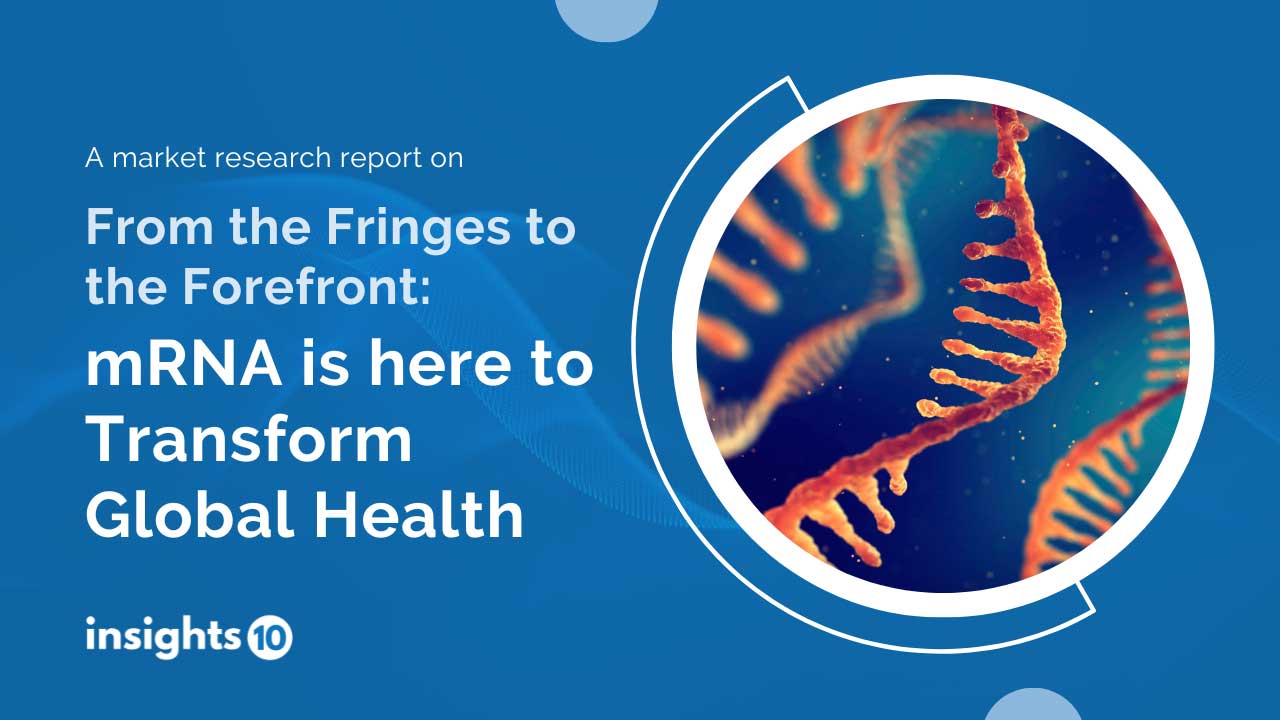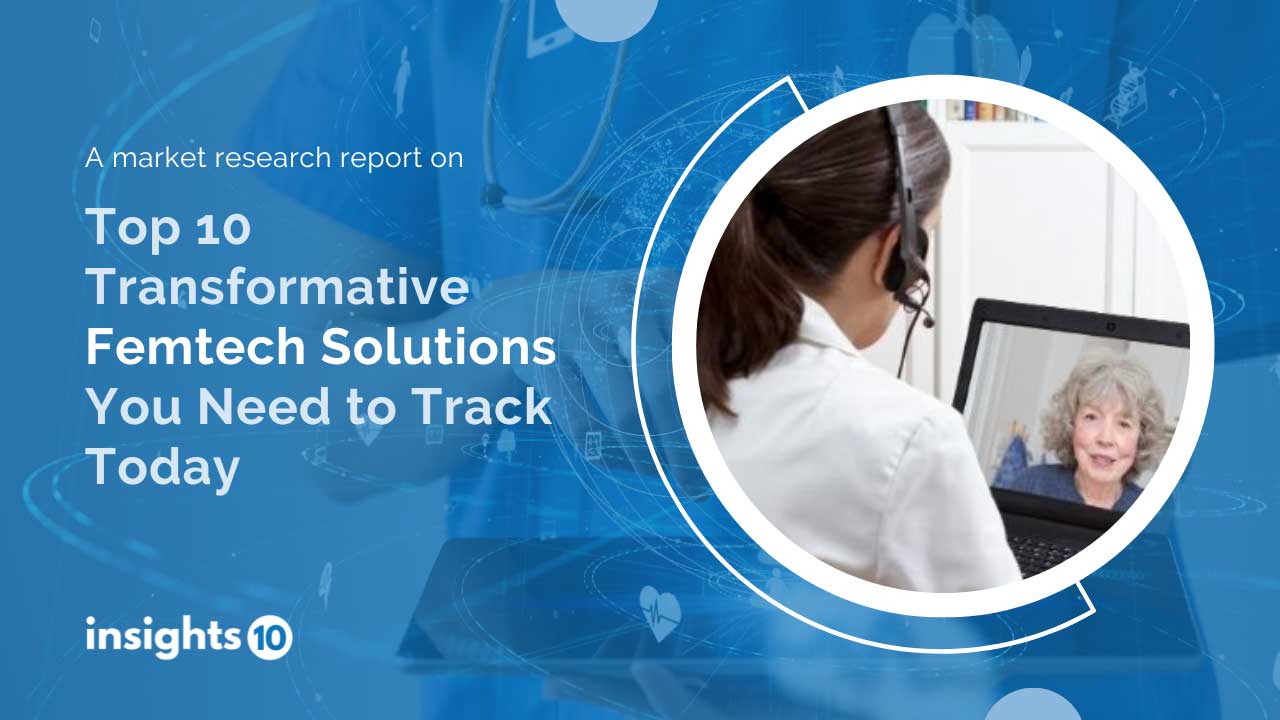Fringes to Forefront: mRNA is here to transform global healthcare
Even though mRNA therapies have recently generated a lot of hype, few businesses have been able to advance their concepts and turn science into clinical reality. Vaccines have been used to prevent diseases including COVID-19, polio, and smallpox for ages.
Buy Now Download Sample Report

mRNA: The Understanding
Discovered in 1960, mRNA stands for “messenger ribonucleic acid” or “messenger RNA”; basically the mRNA is software of life
Storage- DNA stores instructions for proteins in the nucleus
Software- mRNA is a temporary set of instructions for cells to make a protein
Application- Proteins form the basis of life by performing the function required by every cell
Advantages of mRNA:
- Speed of design and scalability of manufacturing mRNA over other vaccines and therapies has a very major advantage
- Another advantage that mRNA may offer over other more traditional vaccine types (such as live attenuated vaccines, inactivated vaccines and sub-unit vaccines) and over DNA based vaccines is safety
- mRNA is non-infectious and non-integrating (i.e. it does not cause DNA insertions) which gives it a further advantage over attenuated and DNA based vaccines
How does the mRNA works?
- After decades of research and the accumulation of theoretical knowledge, the COVID-19 pandemic in early 2020 brought mRNA to the forefront as a new modality, and finally reached the tipping point in demonstrating its utility in infectious diseases
- mRNA vaccines, upon delivery, tell our cells to synthetize proteins, e.g., resembling those from the coronavirus (the SARS-Cov-2 spike proteins)
- This cellular generation of proteins then elicits an immune response in which the body produces virus-neutralizing antibodies even before infection with the real pathogen
mRNA made Headlines in 2020
- mRNA made headlines in December 2020 when one of the world’s first COVID-19 vaccines, developed by US-based pharmaceutical company Moderna, the National Institute of Allergy and Infectious Diseases (NIAID), and the Biomedical Advanced Research and Development Authority (BARDA), began rolling out to members of the public
- Moderna’s vaccine was developed at unprecedented speed, and its public launch marked a turning point in the pandemic. By the end of last year, the company had shipped more than 800 million vaccines worldwide, with approximately 25 percent shipped to low-to-middle income countries through direct sales or donations
- The Company’s mRNA platform is intrinsically flexible, allowing the company to move mRNA medicines quickly from idea to development candidate nomination. This means it can be used to contain future COVID outbreaks and manage yearly mutations, staying ahead of the virus’ evolution
- The company’s manufacturing platform was designed so that it would not need to amend production processes to produce new boosters or mRNA vaccines
mRNA Therapies: Clinical Pipeline Assets

1. Executive Summary
1.1 Disease Overview
1.2 Global Scenario
1.3 Country Overview
1.4 Healthcare Scenario in Country
1.5 Patient Journey
1.6 Health Insurance Coverage in Country
1.7 Active Pharmaceutical Ingredient (API)
1.8 Recent Developments in the Country
2. Market Size and Forecasting
2.1 Epidemiology of Disease
2.2 Market Size (With Excel & Methodology)
2.3 Market Segmentation (Check all Segments in Segmentation Section)
3. Market Dynamics
3.1 Market Drivers
3.2 Market Restraints
4. Competitive Landscape
4.1 Major Market Share
4.2 Key Company Profile (Check all Companies in the Summary Section)
4.2.1 Company
4.2.1.1 Overview
4.2.1.2 Product Applications and Services
4.2.1.3 Recent Developments
4.2.1.4 Partnerships Ecosystem
4.2.1.5 Financials (Based on Availability)
5. Reimbursement Scenario
5.1 Reimbursement Regulation
5.2 Reimbursement Process for Diagnosis
5.3 Reimbursement Process for Treatment
6. Methodology and Scope
Methodology for Database Creation
Our database offers a comprehensive list of healthcare centers, meticulously curated to provide detailed information on a wide range of specialties and services. It includes top-tier hospitals, clinics, and diagnostic facilities across 30 countries and 24 specialties, ensuring users can find the healthcare services they need.
Additionally, we provide a comprehensive list of Key Opinion Leaders (KOLs) based on your requirements. Our curated list captures various crucial aspects of the KOLs, offering more than just general information. Whether you're looking to boost brand awareness, drive engagement, or launch a new product, our extensive list of KOLs ensures you have the right experts by your side. Covering 30 countries and 36 specialties, our database guarantees access to the best KOLs in the healthcare industry, supporting strategic decisions and enhancing your initiatives.
How Do We Get It?
Our database is created and maintained through a combination of secondary and primary research methodologies.
1. Secondary Research
With many years of experience in the healthcare field, we have our own rich proprietary data from various past projects. This historical data serves as the foundation for our database. Our continuous process of gathering data involves:
- Analyzing historical proprietary data collected from multiple projects.
- Regularly updating our existing data sets with new findings and trends.
- Ensuring data consistency and accuracy through rigorous validation processes.
With extensive experience in the field, we have developed a proprietary GenAI-based technology that is uniquely tailored to our organization. This advanced technology enables us to scan a wide array of relevant information sources across the internet. Our data-gathering process includes:
- Searching through academic conferences, published research, citations, and social media platforms
- Collecting and compiling diverse data to build a comprehensive and detailed database
- Continuously updating our database with new information to ensure its relevance and accuracy
2. Primary Research
To complement and validate our secondary data, we engage in primary research through local tie-ups and partnerships. This process involves:
- Collaborating with local healthcare providers, hospitals, and clinics to gather real-time data.
- Conducting surveys, interviews, and field studies to collect fresh data directly from the source.
- Continuously refreshing our database to ensure that the information remains current and reliable.
- Validating secondary data through cross-referencing with primary data to ensure accuracy and relevance.
Combining Secondary and Primary Research
By integrating both secondary and primary research methodologies, we ensure that our database is comprehensive, accurate, and up-to-date. The combined process involves:
- Merging historical data from secondary research with real-time data from primary research.
- Conducting thorough data validation and cleansing to remove inconsistencies and errors.
- Organizing data into a structured format that is easily accessible and usable for various applications.
- Continuously monitoring and updating the database to reflect the latest developments and trends in the healthcare field.
Through this meticulous process, we create a final database tailored to each region and domain within the healthcare industry. This approach ensures that our clients receive reliable and relevant data, empowering them to make informed decisions and drive innovation in their respective fields.
To request a free sample copy of this report, please complete the form below.
We value your inquiry and offer free customization with every report to fulfil your exact research needs.














































